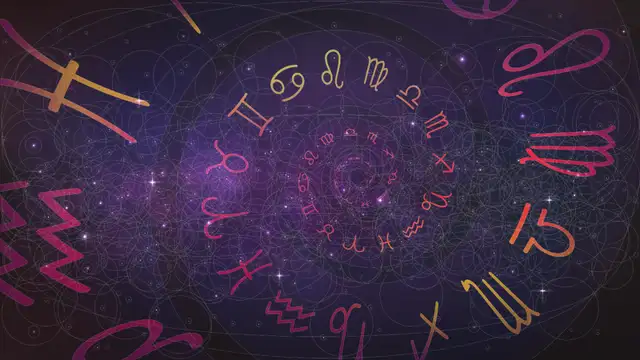A horary chart: querent's deep motives and radicality

aug 10, 2021 For astrologers
The horary chart shows a person's unconscious motives at a given moment. The subconscious drives the everyday micro-decisions and inevitably leads to predictable events. Moreover, ultimate reasons determine the long-term circumstances in which a person finds himself.
For this reason, it is possible to predict the future - specific events and the circumstances in which a person will find himself.
One thing is essential in this story - the chart shows unsaid motives, that is, what a person may not even suspect himself. And this is how it works.
Feelings and Emotions
If a person experiences vivid sensations that he can designate in words (hunger, pain in the elbow, resentment at something, and so on), then such conscious phenomena are called feelings.
However, if the level of sensations is trimmed, a person cannot designate them - he feels that something is wrong, but he does not understand what. These feelings are called emotions. The person feels an increased emotional background.
You can compare it to temperature. Until it reaches a critical threshold, we are not even aware that the temperature increased, but from some moment, we can accurately designate "my temperature has risen."
Client Feelings and Horary Chart
A client comes to an astrologer with noticeable conscious sensations (he is worried about a particular situation). The horary chart in his case shows what exactly is essential for the client - and this entirely coincides with what the client voices.
However, it so happens that the client comes with a heightened emotional background. He feels something is going wrong but does not fully understand precisely what.
The brain works so that any situation of uncertainty is unbearable for it. In particular, if there is discomfort, but its cause is not clear, the brain begins to look for an explanation for vague anxiety. They call it rationalization.
In the progression of this rationalization, the client can convince himself that the cause of his anxiety is work, relationships, or something else. But the horary chart will show a completely different story.
Radicality of the Horary Chart
There are three types of chart behavior when, as an astrologer, you assess the client's ulterior motives:
1. Radical Horary Chart
The chart highlights at least twice what is vital for the client, which coincides with what the client voices. We call such charts radical.
These charts contain the answer to the question posed because they adequately reflect unconscious motives and what they will inevitably lead to. Using such horary charts, you can confidently make accurate predictions. Testability makes astrology a science.
2. Radical Charts, but Focused on Another Issue
It so happens that the horary chart highlights at least twice what is essential for the client, but this does not coincide with what the client says.
It means that the querent is worried about a specific circumstance, but he cannot or does not want to admit it. For example, a woman asks about a relationship with a man, but she is interested in the 8th house - his money. However, she is not ready to openly admit such a desire.
If you follow the client's stories and start answering their question, you will inevitably go wrong.
On the other hand, if you immediately begin to answer the actual question, you will either cause amazement (from the series "How did you know about it"), or a defensive reaction, up to aggression.
3. Defocused Charts
The card only once confirms what is essential to the client. It usually happens when a person is concerned about several related topics simultaneously.
For example, when a man quits his job, he worries about finances, his son's education, and his relationship with his wife. And the horary chart once highlights the 2nd house (money), 7th house (wife), 5th house (child), and 10th house (the work itself), giving no preference to anyone.
Usually, the true essence of a query is about one thing - the relationship, the money, or the job. And the chart contains the answer to this question. But the astrologer does not know what to choose and is often mistaken.
4. Non-Radical Horary Charts
Finally, it so happens that the client voices the problem, but the chart does not highlight anything at all.
It is a typical sign of rationalization - the client feels something. He even convinced himself that he is worried about money or work. It seems to him that this is his actual request. But in reality, this is not the case.
Anxiety can be caused by stress, lack of sleep, mild poisoning, and so on. Considering such requests, the astrologer risks making a mistake and answering a question to which there is simply no answer in the horary chart.
How to Quickly Identify the True Motives of the Querent
Assessing what the chart highlights manually is a rather lengthy and tedious procedure. You need to define:
- What planets the lord one or the Moon highlights by major receptions (that is, that which rules the mind and heart of the querent);
- What planet is the dispositor of Fortune (what shows the deepest desire of a person);
- In which house are the querent's planets and Fortune - this is what indicates exciting topics;
- Separately, it is necessary to consider the 3-degree conjunction of the querent or Fortune with the cusps (taking into account the old rule of 5 degrees) - these are significant houses for the querent.
- It is necessary to consider the conjunctions of the querent's planets with other planets. What the querent is physically (or emotionally) tied with is an essential part of the question;
- That's not all. You also need to evaluate the conjunctions by antiscia of the querent's planets with cusps or with other planets - this will indicate secret desires that the client does not want to voice;
- After that, you need to evaluate the intersection of indicators - which planets the chart highlights 1, 2, or more times. Which houses correspond to these planets, and which houses do the chart highlights separately;
- In addition, you have to consider that the planet's position close to the house cusp (in the same sign) automatically means that it is, according to reception, interested in the ruler of that house. And then, you need to exclude this automatic repetition from the scoring.
As a result, assessing radicality takes you 10 to 15 minutes.
Fortunately, a computer program for casting and analyzing horary charts does the job in seconds.
In the menu "Analysis → The highlights," you will find a detailed explanation of why this or that house or planet is important to the client.

Fig. Visual representation of highlighted house
It will immediately save you from mistakes. According to observation, the vast majority of incorrect predictions are not due to technical errors of the astrologer but due to working with non-radical charts, in which there is simply no answer to the question posed.

Mark Rusborn (A. Borealis)
Former Soviet physicist, now a professional astrologer, creator of the Pocket-Astrologer project.